Discover the Avicenna Mausoleum in Hameda
Honoring an Iconic Thinker and Healer

The Mausoleum of Avicenna in Hamadan, Iran, stands as a testament to the enduring legacy of Avicenna (Ibn Sina), a preeminent scholar of the Islamic Golden Age. This architectural marvel not only serves as his final resting place but also celebrates his contributions to various fields of knowledge.
Contents
Avicenna’s Legacy
Born around 980 in Afshana, near the city of Bukhara, Avicenna was a polymath whose works spanned medicine, philosophy, and the sciences. His most notable contributions include The Book of Healing and The Canon of Medicine, texts that significantly influenced both Eastern and Western medical practices until the 17th century.
Contributions Across Disciplines
Avicenna’s intellect knew no bounds, with contributions to astronomy, alchemy, geography, geology, psychology, Islamic theology, logic, mathematics, and physics. Of the estimated 450 works he authored, approximately 240 survive, showcasing the breadth of his expertise.
The mausoleum, declared a national heritage site in 1996, does more than commemorate Avicenna’s final resting place. It houses a museum dedicated to his life and the science of medicine, attracting scholars and visitors worldwide, drawn to its rich historical significance and the serene green spaces that envelop it.
Early Life and Education
Avicenna’s early life in Bukhara laid the groundwork for his future achievements. Despite his family’s religious beliefs, he pursued a comprehensive education under various mentors, mastering the Quran, literature, mathematics, and the sciences by his late teens. This solid foundation enabled his later contributions to human knowledge, cementing his status as one of history’s most influential figures.
The Mausoleum’s Architectural Marvel
The Mausoleum of Avicenna features two main halls: the southern hall, now a museum showcasing coins, pottery, bronze, and other artifacts, and the northern hall, dedicated to a library. Avicenna’s grave is situated to the right of the entrance, with Abu Saeed Dakhdouk’s grave to the left. The eastern courtyard, facing the entrance and opposite BuAli Street, is the resting place of the national poet Abu al-Qasim Aref Qazvini.
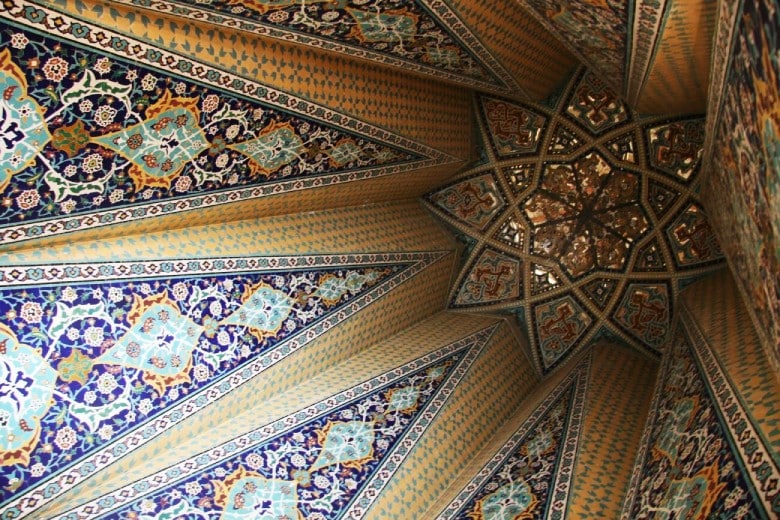
A Brief History of the Mausoleum
During Avicenna’s lifetime, a rebellion by the soldiers of Shams al-Dowleh, the ruler of Hamadan at the time, led Avicenna to seek refuge in the home of Abu Saeed for 40 days. Following his death, Avicenna was buried there, and later, Abu Saeed was also laid to rest beside him. Originally marked by a simple four-arched structure, the grave underwent significant transformations over the centuries, notably during the Qajar and Pahlavi eras, culminating in the construction of the current magnificent edifice inspired by the architecture of the Gonbad-e Qabus and blending ancient Iranian and post-Islamic styles.
Design and Features
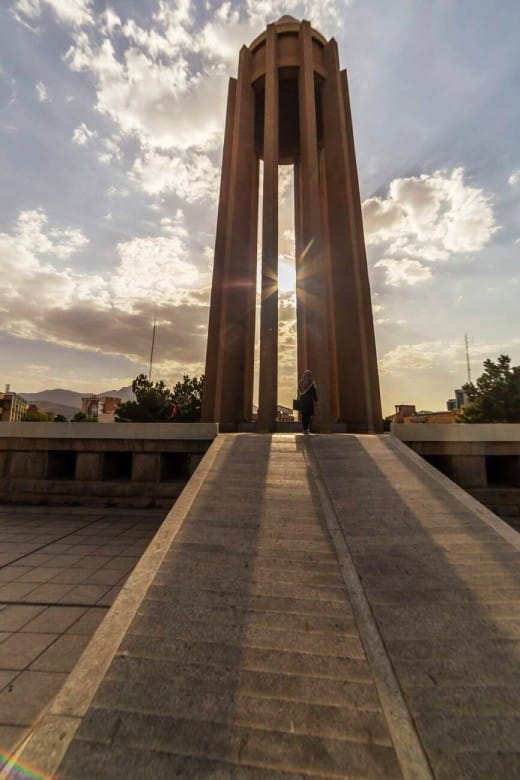
The mausoleum showcases a blend of ancient Iranian and post-Islamic architectural styles, with elements inspired by traditional Iranian art. The design, influenced by the Gonbad-e Qabus, represents Avicenna’s profound legacy across various sciences and philosophies. Notably, the mausoleum has 12 columns, symbolizing Avicenna’s mastery over 12 different sciences, and features a vast array of artifacts, including a unique marble slab inscribed with calligraphy, located among the 12 pillars of the mausoleum tower.
The Various Sections of the Abū ‘Ali Sina Mausoleum
The Abū ‘Ali Sina Mausoleum comprises several distinct sections, each offering a unique perspective on the life and achievements of this remarkable figure. Let’s delve into these sections to get a comprehensive understanding.
The Library
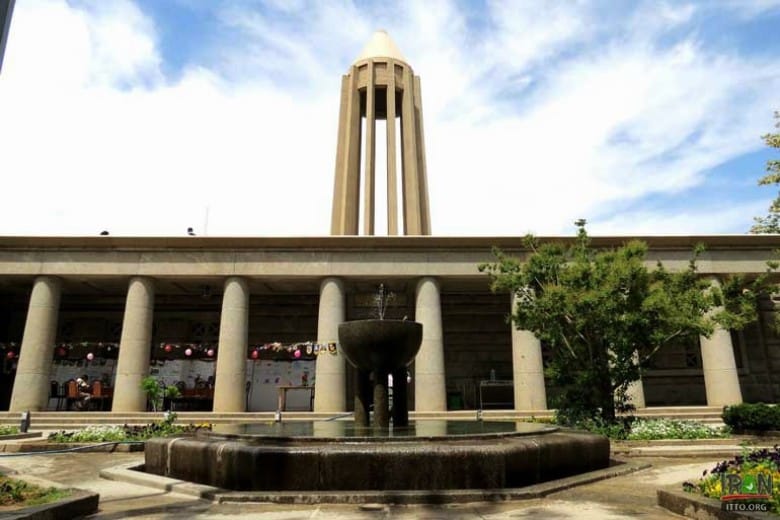
One of the significant initiatives undertaken by the Committee of the Millennium Celebration of Avicenna was the establishment of a library adjacent to his mausoleum. Recognizing Avicenna’s status as a global philosopher and scholar, the committee called upon authors, cultural institutions, and publishers from both Iran and abroad to contribute books to this library.
Initially housing 649 volumes, the library, initially known as the “Reading House of Abū ‘Ali Sina,” saw a significant expansion following the publication of the committee’s call for contributions. Today, it boasts an impressive collection of 8,000 Iranian and foreign books. Approximately 30 volumes are in Persian, while 590 are in languages such as French, English, and German, reflecting the international significance of Avicenna’s work.
The Statue of Avicenna
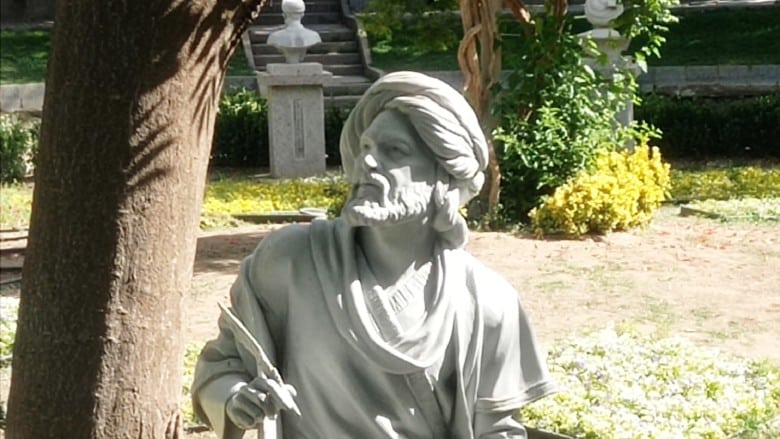
Unlike other historical figures whose images are based on conjecture, Avicenna’s likeness had no definitive representation in ancient manuscripts, libraries, or churches. Recognizing this gap, the Committee of the Millennium Celebration decided to commission a statue of Avicenna.
To create an accurate portrayal, multiple commissions were formed, comprising scholars familiar with Avicenna’s works and biographies, as well as references from his own writings and those of his disciple, Abu Ubayd al-Juzjani, and the writings of later scholars like Bīhāqī. Under the skilled hands of Mr. Abū al-Ḥasan Ṣadīqī, a renowned sculptor, a lifelike statue of Avicenna was brought to life. This statue, standing at 3.10 meters and weighing approximately four tons, is prominently displayed in Bu ‘Ali Sina Square in Hamadan.
The Mausoleum Grounds
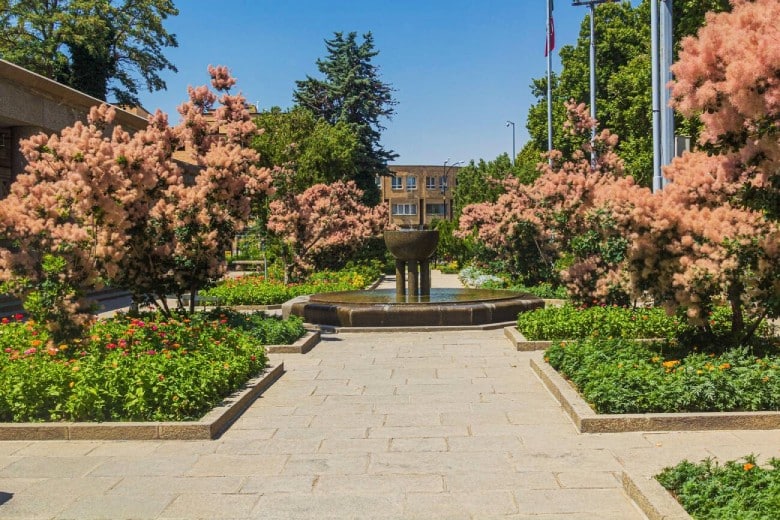
The Abū ‘Ali Sina Mausoleum is situated in a picturesque, semicircular garden in Bu ‘Ali Sina Square, reflecting the beauty of traditional Iranian gardens. With lush greenery, meticulously designed flower beds, and serene fountains, the surroundings of the mausoleum provide a tranquil setting for reflection and contemplation.
The Avicenna Museum
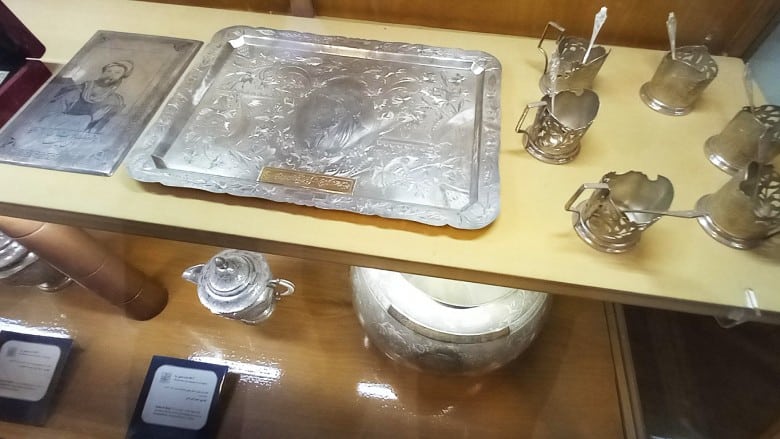
The southern hall of the mausoleum, converted into a museum in 1951, is dedicated to preserving and displaying various artifacts and historical items. This includes a remarkable collection of ancient coins, pottery, bronze artifacts, and other items dating back to pre-Islamic and Islamic eras. Among the museum’s most notable exhibits is a preserved skull believed to be that of Avicenna, discovered during the demolition of the old mausoleum. Additionally, the museum offers valuable insights into ancient medicinal practices and herbal medicine, featuring an array of antique surgical instruments and medicinal herbs.
BOOK ONLINE
Iran Hotels Online
Conclusion
The Abū ‘Ali Sina Mausoleum, with its library, statue, beautiful garden, and museum, stands as a tribute to one of Iran’s most celebrated thinkers. It serves as a testament to the enduring legacy of Avicenna, drawing scholars, philosophers, and visitors from around the world. Whether you’re interested in his philosophical contributions, historical artifacts, or simply seeking a serene place for reflection, a visit to this mausoleum is a must when exploring Iran’s rich cultural heritage.
Read More



